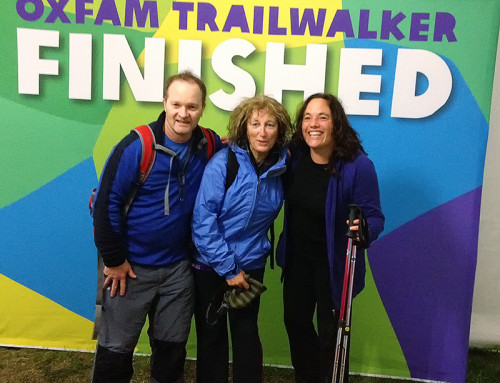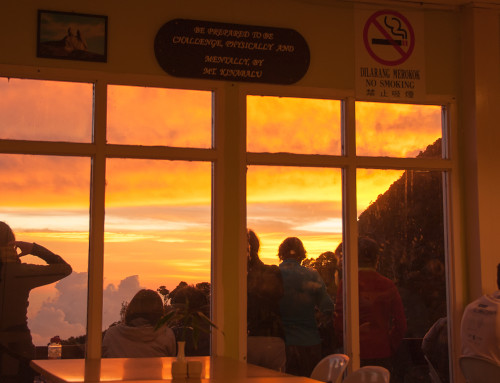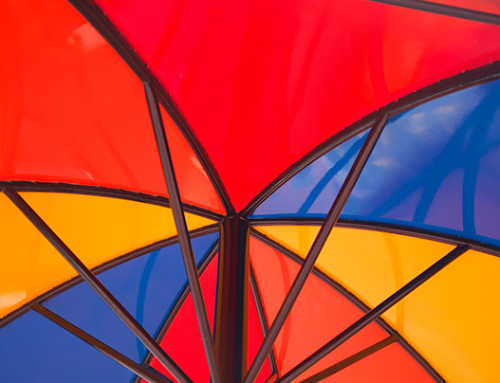“On belay”, “Belay on”, “Climbing”, “Climb on” is the constant mantra of climbers. It’s the communication pattern that allows you to climb safely with your partner. By being consistent it allows two climbers separated by distance to communicate clearly. Banff is a mecca for rock-climbing, mountaineering and ice-climbing, and during winter the temperatures drop to -40 degree Celsius so all waterfalls freeze to create unique formations of vertical ice. Some waterfalls are quite vertical and others are more like rolling staircases of blue ice. Some of the frozen waterfalls can be 150 metres in length and they are dotted throughout Banff National Park. Climbers choose their grade levels and then test their skill and nerve in climbing in the icy temperatures. Mike was usually quite conservative and adjusted the choice of grades he climbed depending on how he was feeling, temperature on the day and his intuition.
Mike packed his climbing bag. It included two ropes, quickdraws, belay devices, numerous karabiners, slings, ice-screws, a harness, helmet and ice axes. On his body he wore a layer of polypropylene, polar fleece, wind suit, neck-warmer and toque as well as thick wool socks and mountaineering boots. His hands were always freezing so he wore two layers of gloves and over mitts when belaying.
The walk to the base of the climb was uneventful and Mike greeted Roy at the base of the first climb. Roy set-up the belay by fastening himself to the ground and then he organised his belay device. He then uncoiled the rope and feed the rope out to Mike who planned to lead the first climb. It was an easy rambling waterfall of ice, a nice warm-up for the subsequent climb. It was 30 metres in length. Mike climbed solidly and he moved gracefully and effortlessly over the ice, balancing delicately on the front points of his crampons and planting the ice axes to adhere to the ice. Mike moved his feet upwards, one after each other, kicking in the front points of the crampons 2-3 cms into the ice. Once secure Mike, removed the right ice axe, planted it as high as possible and then removed the left ice axe and planted it like the right one. It was a constant rhythm of feet then hands to move vertically up the waterfall. It was a combination of balance, strength, endurance and technique. Planting the ice-axes too deeply meant that you grappled in taking them out of the ice which wasted precious energy. Planting the ice axe too shallowly meant that they would not hold.
Mike balanced himself and then removed an ice screw from his harness and screwed it into the ice. The thread on the screw bit into the ice and excess ice was exuded through the centre of the screw. This was the most delicate part on any climb as you needed to balance on your front points, keeping your heels down and then work your arms and hands through the slings of your ice axes to place the ice screw. It was your protection when you were leading, minimizing the distance you fell, if you did make a mistake. This didn’t happen often to Mike but he did not relish the thought of falling while holding sharp ice axes that could enter his body and crampons that could catch on the ice on the downward journey. It felt like a delicate balance and it was…. Mike set protection about every three metres and finished the climb and set-up a belay to bring Roy to the top. Roy removed each screw and fastened it to his own harness, more relaxed knowing he had a rope above him to protect his fall. They sat for a moment admiring the view and then they rappelled to the ground.
Mike eye-balled the next vertical waterfall with glee. It was thirty metres of ice and a reasonable grade. Mike tied his figure eight to his harness as Roy set-up a belay once again. He was on the sharp end of the rope once again. Mike rechecked his crampons, re-ordered the ice-screws on his harness, tightened the wrist straps on his ice axes and then surveyed the climb. It looked straight-forward and he pinpointed the first place he would set up his first piece of protection. Mike climbed effortlessly, balanced himself and then turned the ice screw into the ice. He attached the quickdraw, then looped the rope through the karabiner. He relaxed, now safe and secure until he made his next assault forward.
Mike calmed because he was at no risk of falling any lower than the position of the ice screw. He took a few deep breaths, steadied himself again and moved upward. Once past the ice screw you always looked down to determine the run-out from the last piece of protection. When Mike was three metres above his last piece of protection he knew that he would be looking at a six metre fall as the climber fell to the protection and then the same distance below. Mike continued upward, searching for a place to set the next piece of protection. He was struggling to see a suitable spot and then made the mistake of continuing upward. He was not thinking straight, becoming flustered and he was entering dangerous territory. He was getting tired, scared and exhausted and he had now climbed himself into a proverbial corner well beyond his last piece of protection. He was fifteen metres up, and a fall at this point would be disastrous….
He was becoming exhausted and then it happened…. His right hand popped out of his right ice axe sling and he knew that ‘this was it’. The sheer horror of the moment was indescribable… ‘This was it.’ He was certain of this now. He knew he had not protected wisely, an out of character mistake that would be costly. Mike was looking at a fifteen metre fall to the ground.
After feeling the sheer terror of the moment…he let go and resigned himself to his fate. “Oh well I can’t control this now” and then he relaxed, believing he would fall to his impending death. He relaxed, waiting for the inevitable thud, but instead felt peacefulness, tranquility and quietness as he fell. It seemed to take forever as he floated down the waterfall. He was ok with the consequences of his own mistake, he had made the error of judgement and no one else was to blame. He kept falling, floating and falling further downward. A few seconds seemed like minutes of a gentle descent through a foggy cloud.
He hit the snow bank on his back, head down some five metres below Roy. He opened his eyes, wiggled his toes to see if his legs were working and then his fingers. He looked into Roy’s eyes, pupils dilated to the maximum… “I’m ok Roy.” Somehow the last piece of protection had broken his fall… not a lot… but just enough to allow him to live. Luckily the left ice axe he carried had missed his body and the crampons had also missed catching on the waterfall on the way down.
In shock, Mike somehow talked Roy into climbing the pitch to retrieve the lone ice axe. Mike then followed Roy to the top of the climb, exhausted more than he realised. The fall had weakened his body. Mike sat in the pub afterwards, his hand shaking as he attempted to drink his beer. He was in shock. “Roy, I don’t mind falling… but I don’t want to ever fall that far again”. He checked himself into the local hospital and was given the all clear.
The gentleness of the fall haunted him and he realised that it was not his time.
Two weeks later…. Mike climbed the best pitch of ice he had ever climbed. He climbed dance like, fluid and confident. His protection was adequate this time but it was not needed. Falling was never a fear on the climb. He was steady and bold. His previous ‘near miss’ had made him stronger, wiser and more comfortable with himself as he relished the dance like movement of his body over the vertical ice. He gazed at the scenery and drank his coffee, happy to be able to climb again.
A chilling true story while ice climbing in the Canadian Rockies.






Leave A Comment